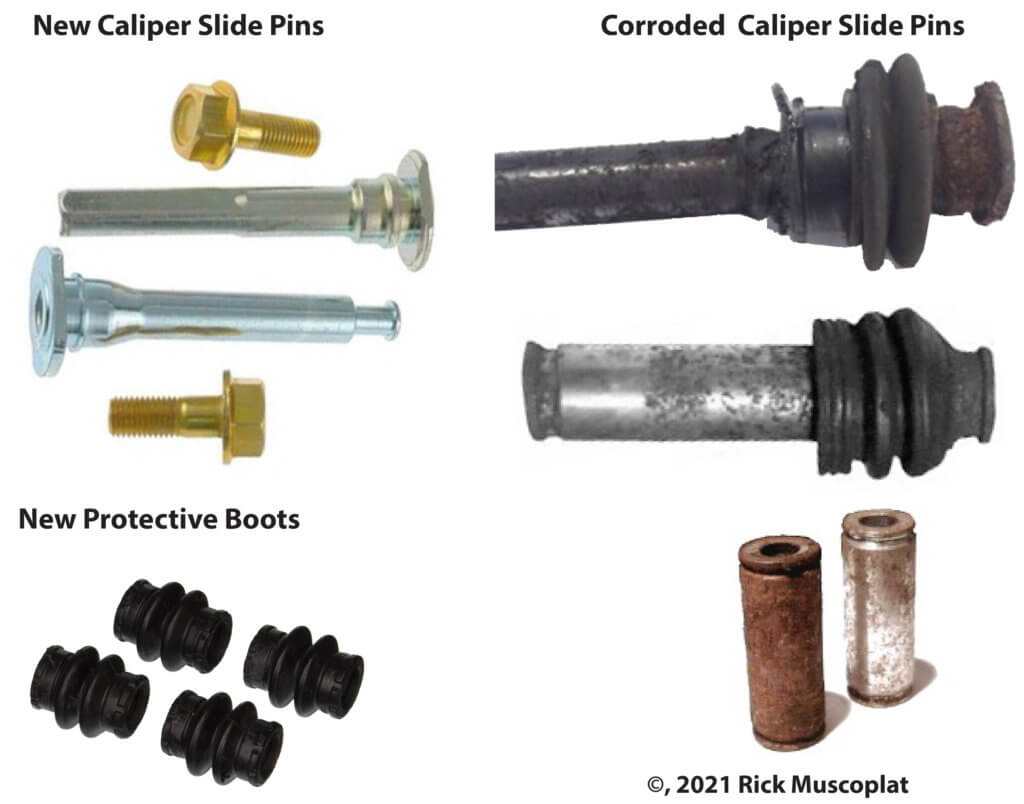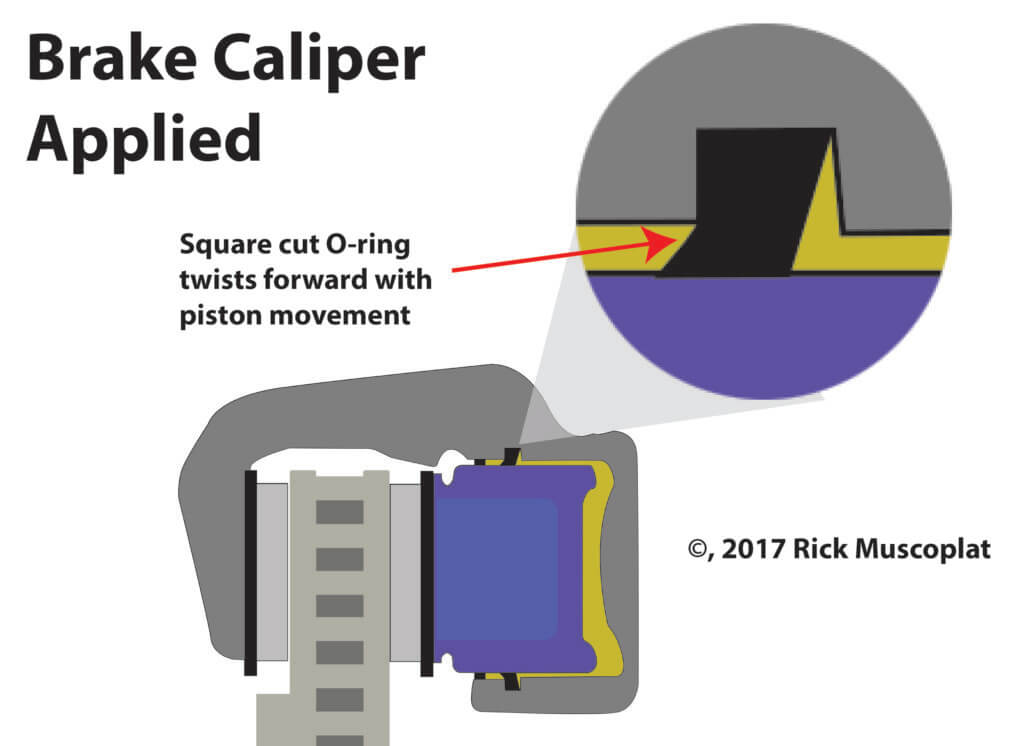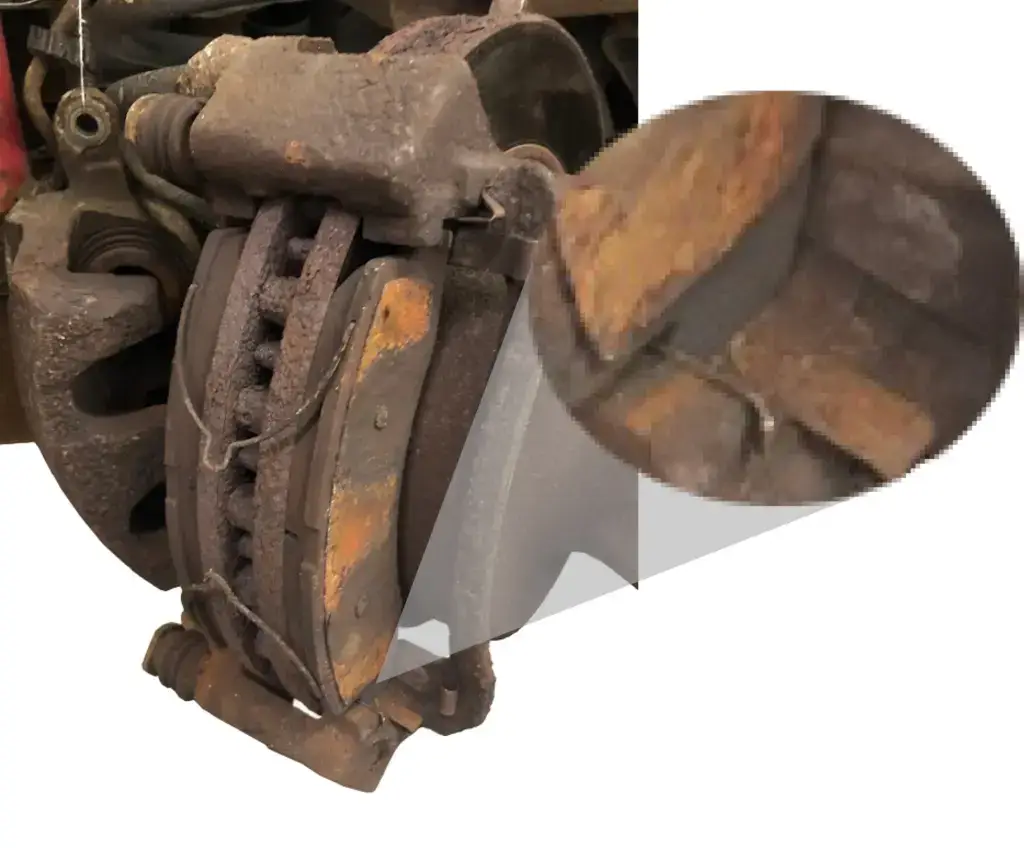Seized brake caliper: Most common causes and fixes
Learn the most common causes of a seized brake caliper and the best fixes
A seized brake caliper will allow your brakes to apply, but not release quickly. That will result in rapid brake pad and rotor wear, along with decreased braking ability and noise. The two most common causes of a seized brake caliper are corroded slide pins and brake pad binding caused by rust formation under the anti-rattle clips. I’ll show you how to spot brake caliper problems and prevent seizing.
Understanding brake calipers
Most vehicles are built with a floating brake caliper. Floating brake calipers have one or two pistons on one side of the caliper. As the piston(s) applies. it forces the inboard brake pad against the rotor. The brake fluid pressure forces the caliper away from the rotor which then pulls the opposite side of the caliper into the outboard pad, forcing it against the opposite side of the rotor. A floating caliper slides on two brake caliper slide pins.

Brake caliper slide pins are protected from the elements by rubber boots and lubricated with a special high-temperature grease. When they are cared for, everything works as planned. But sometimes, things go wrong.
When the caliper pin boots fail, water corrodes the slide pins and bore, preventing the caliper from releasing properly
The protective rubber boots should be replaced on every brake job. They’re inexpensive (around $8/set) and easy to replace. In addition, the caliper pins should be cleaned and lubricated with high-temperature grease during a brake job. If this isn’t done, water enters the slide pin area, corrodes the slide pin, and causes it to seize. Once that happens, the caliper can apply pressure, but can’t release it. So the pads stay in contact with the rotor even after you release the brakes.

Rust jacking is the 2nd most common cause of a seized brake caliper
When rust builds up on the caliper bracket abutment areas, the expanding rust can cause the brake pads to bind and stay engaged with the brake rotor, rather than relax and release. That’s why it’s so important to remove the rust under the anti-rattle clips during a brake job and coat those areas with dielectric brake grease. The grease greatly reduces rust formation.
Hardened O-ring seals can also cause a sticking brake caliper
The brake fluid is contained in the caliper bore by a square cut  O-ring that fits tightly around the caliper piston. When you apply the brakes, the fluid pressure pushes the piston out, twisting the O-ring toward the rotor. When you release the brakes, the rubber O-ring returns to its untwisted shape, pulling the piston back on the caliper bore.
O-ring that fits tightly around the caliper piston. When you apply the brakes, the fluid pressure pushes the piston out, twisting the O-ring toward the rotor. When you release the brakes, the rubber O-ring returns to its untwisted shape, pulling the piston back on the caliper bore.
Heat and age can cause the O-ring to harden and lose its resiliency, so it doesn’t return to its original shape as quickly, or sometimes at all. In addition, heat can cause the O-ring to crack and leak.
Once an O-ring hardens, it can prevent the piston from retracting quickly, thereby causing the pads to remain in contact with the rotor. This is referred to as a sticking caliper or a seized caliper.
Symptoms of a sticking brake caliper
Noisy brakes
The pads stay in contact with the rotor and overheat, causing brake squeal, chatter and vibration
Burning smell
The excessive heat from remaining in contact with the rotor causes the friction material to burn and give off a burning smell
Vehicle pulls to one side during braking
A sticking brake caliper can cause the vehicle to pull to one side during braking. In some cases, the pull can be so severe that it’ll cause the steering wheel to move noticeably to one side.
Brake fluid leaks caused by failed O-ring
A sticking brake caliper can also lose brake fluid past the cracked O-ring seal. You’ll also notice a low brake fluid level in the brake fluid reservoir.
Excessive heat from the wheel due to a seized brake caliper
The sticking caliper will create excessive heat because it keeps the pads in contact with the rotor. Use a non-contact infra-red thermometer aimed at the rotor to measure the temperature difference between the left and right rotors. They should be close to the same temperature. If you notice a large difference in temperature, chances are you’ve got a sticking brake caliper (also called a seized brake caliper).
Loss of braking power
A sticking brake caliper will cause a loss of braking power due to brake pad overheating. As a brake pad heats beyond its normal operating range, the friction material burns and off-gasses, causing a dramatic reduction in braking ability.
©, 2021 Rick Muscoplat
Posted on by Rick Muscoplat
